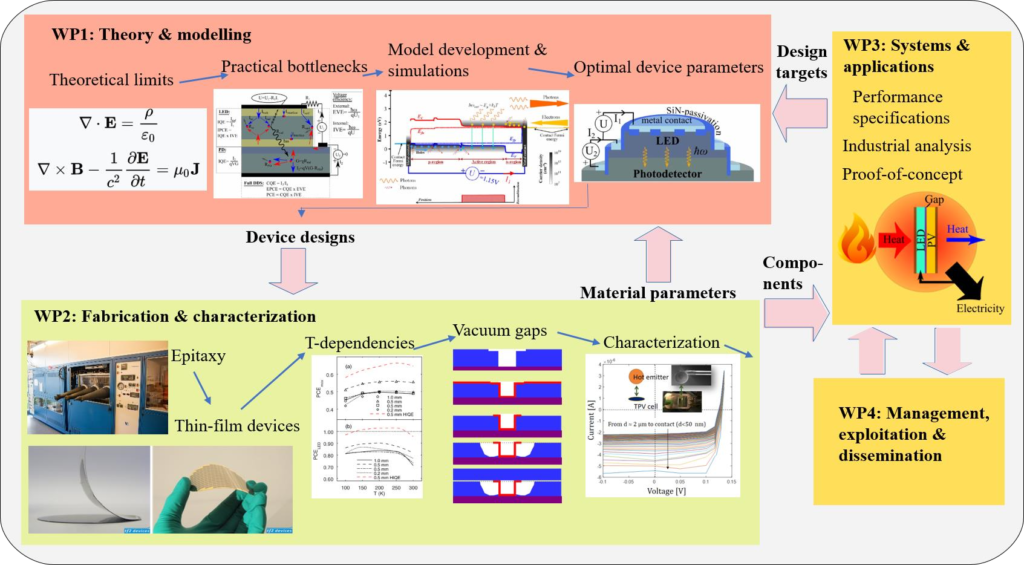The work in the project is divided in four work packages:
WP1 – Theory and modelling
WP1 focuses on the challenge of understanding the limitations of power harvesting in presently realizable and future device configurations and finding strategies to identify and avoid the potential key bottlenecks complicating the device development. To do so, both numerical models of the full charge-photon-phonon transport and theoretical models of the thermodynamics including losses will be developed. In addition, solutions for improved thermal management, in terms of single solid-state laboratory prototype device or vacuum gap-based insulation involving electromagnetic heat transfer in the near field will be considered.
WP1 is led by Dr. Olivier Chapuis and CNRS
WP2 – Fabrication and characterization
WP2 focuses on developing the approaches for fabricating thin-film (TF) LED and PV cell structures for demonstrating electroluminescent heat absorption and subsequently thermophotonic waste heat recovery devices. The focus will be on the application of the ELO technique to eliminate all optical losses from the absorbing substrates, on maximizing the photon-recycling and resonance effects in the individual components, and finding geometries and solutions for minimizing optical and resistive losses, while maximizing the light extraction and thermal insulation. This WP is the one requiring the largest efforts.
WP2 is led by Dr. Natasha Gruginskie and Radboud University
WP3 – Systems and applications
WP3 focuses on evaluating the performance and characteristics of the full components of WP2, and using the findings to generate insight on the feasibility of early practical applications as well as providing feedback on the best directions to WPs 1-2.
WP3 is led by Prof. Mika Prunnila and VTT
WP 4 – Management, exploitation and dissemination.
WP4 focuses on project management tasks, and is led by Aalto.

Figure 1: Overview of the work in the project.
